#sancho alfonso of castile
Text
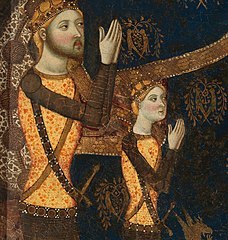

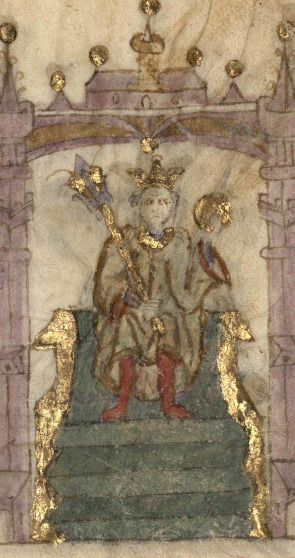
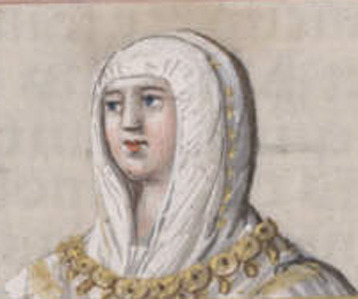
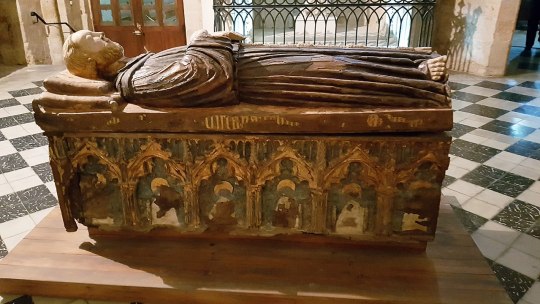
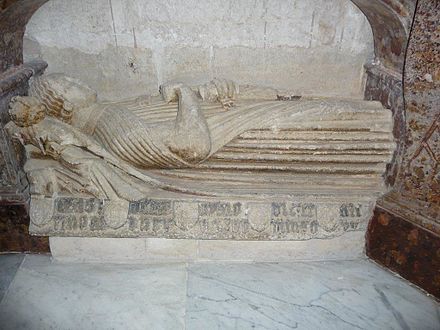

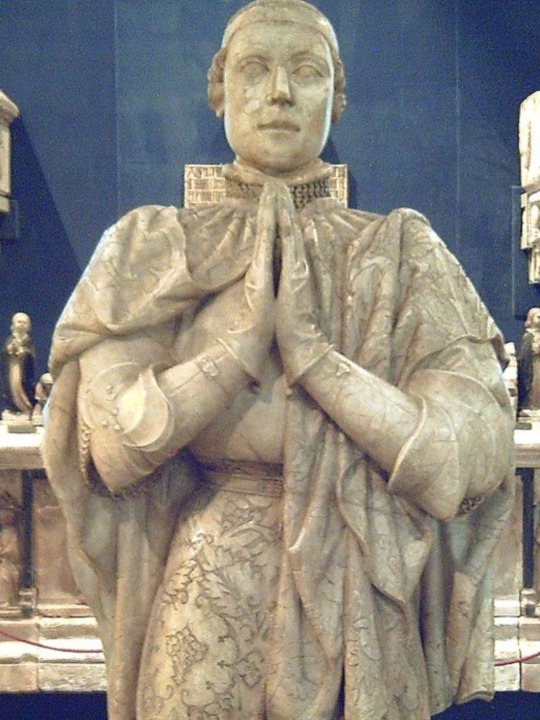
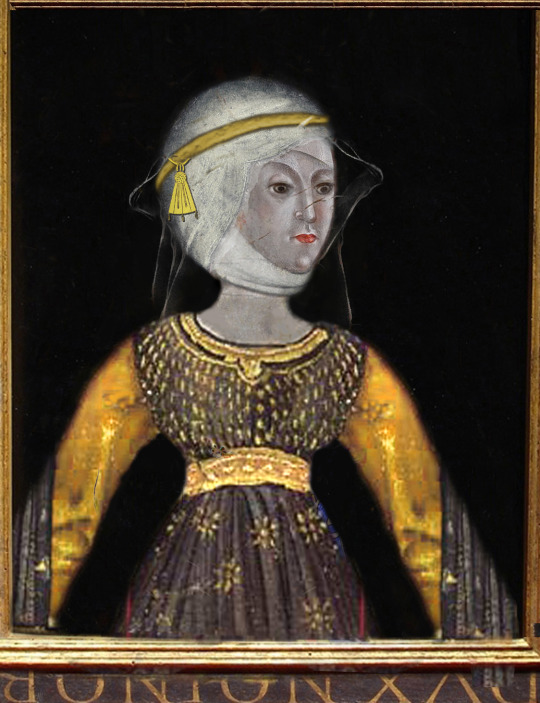

The Bastard Kings and their families
This is series of posts are complementary to this historical parallels post from the JON SNOW FORTNIGHT EVENT, and it's purpouse to discover the lives of medieval bastard kings, and the following posts are meant to collect portraits of those kings and their close relatives.
In many cases it's difficult to find contemporary art of their period, so some of the portrayals are subsequent.
1) Henry II of Castile ( 1334 – 1379), son of Alfonso XI of Castile and Leonor de Guzmán; and his son with Juana Manuel de Villena, John I of Castile (1358 – 1390)
2) His wife, Juana Manuel de Villena (1339 – 1381), daughter of Juan Manuel de Villena and his wife Blanca de la Cerda y Lara; with their daughter, Eleanor of Castile (1363 – 1415/1416)
3) His father, Alfonso XI of Castile (1311 – 1350), son of Ferdinand IV of Castile and his wife Constance of Portugal
4) His mother, Leonor de Guzmán y Ponce de León (1310–1351), daughter of Pedro Núñez de Guzmán and his wife Beatriz Ponce de León
5) His brother, Tello Alfonso of Castile (1337–1370), son of Alfonso XI of Castile and Leonor de Guzmán
6) His brother, Sancho Alfonso of Castile (1343–1375), son of Alfonso XI of Castile and Leonor de Guzmán
7) Daughters in law:
I. Eleonor of Aragon (20 February 1358 – 13 August 1382), daughter of Peter IV of Aragon and his wife Eleanor of Sicily; John I of Castile's first wife
II. Beatrice of Portugal (1373 – c. 1420) daughter of Ferdinand I of Portugal and his wife Leonor Teles de Meneses; John I of Castile's second wife
Son in law:
III. Charles III of Navarre (1361 –1425), son of Charles II of Navarre and Joan of Valois; Eleanor of Castile's huband
8) His brother, Peter I of Castile (1334 – 1369), son of Alfonso XI of Castile and Mary of Portugal
9) His niece, Isabella of Castile (1355 – 1392), daughter of Peter I of Castile and María de Padilla
10) His niece, Constance of Castile (1354 – 1394), daughter of Peter I of Castile and María de Padilla
#jonsnowfortnightevent2023#henry ii of castile#john i of castile#juana manuel de villena#eleanor of castile#alfonso xi of castile#leonor de guzmán#tello alfonso of castile#sancho alfonso of castile#peter i of castile#constance of castile#isabella of castile#asoiaf#a song of ice and fire#day 10#echoes of the past#historical parallels#medieval bastard kings#bastard kings and their families#eleanor of aragon#beatrice of portugal#charles iii of navarre#canonjonsnow
14 notes
·
View notes
Text

Berenguela de Barcelona
She was a very beautiful and extremely graceful young girl who loved chastity and truth and all God-fearing people.
Berenguela was the daughter of Ramon Berenguer III, Count of Barcelona and his third wife Dolça I de Gévaudaun, Countess of Provence. Although her date of birth is unknown, the sources place it between 1108 and 1116. It is known that Berenguela had a good relationship with her older sister, María de Osona, who was the daughter of the first marriage of her father with María Rodríguez, the daughter of El Cid Campeador.
In 1128 Berenguela married Alfonso VII, King of León, Castile and Galicia. She becoming the first queen of the newly reigning dynasty of the House of Ivrea. In 1135, Alfonso VII was crowned “Emperor of Spain” (Imperator totius Hispaniae) in the Cathedral of León. The imperial couple had seven children, of whom Sancho III was King of Castile and Fernando II King of León. The daughters, Constanza and Sancha, became Queens consorts of France and Navarre.
Historians who have dedicated to studying her life consider that Berenguela de Barcelona was one of the characters who deserves a privileged position in the history of Spain. She actively participated in political life and was patroness of the arts. She accompanied her husband in the battles, stopped the uprising in Asturias and heroically resisted the besieged of Toledo by the Muslims. She also introduced a taste for Provencal troubadours to the kingdom, supported writers who narrated the exploits of El Cid and encouraged pilgrimages to Santiago de Compostela, where she was buried in 1149.

Berenguela nació en el prestigioso y rico condado de Barcelona como hija del conde Ramón Berenguer III y de su segunda esposa Dulce de Provenza. La joven barcelonesa destacó por su inteligencia y gran belleza, llegando su fama hasta la corte del rey Alfonso VII de Léon, Castilla y Galicia, hijo de la legendaria reina Urraca. Al parecer fue un noble, Armengol de Urgel, quien le facilitó los trámites para entrar en contacto con los condes de Barcelona. El rey de León tenía poco más de veinte años y no estaba casado, ni siquiera había ninguna candidatura seria para un matrimonio, que tarde o temprano tendría que celebrarse.
Una vez prometida al rey Alfonso VII, Berenguela de Barcelona emprendió un largo viaje. Desde Barcelona hasta la corte de su futuro marido, debía cruzar los dominios del rey aragonés Alfonso el Batallador, quien estaba en disputa con Castilla por cuestiones territoriales y fronterizas. Para evitarlo, Berenguela y su comitiva tuvieron que hacer parte del viaje por el sur de Francia, llegar hasta el Golfo de Vizcaya y fletar unas barcazas que, bordeando la costa cantábrica, les permitieran desembarcar en un puerto controlado por los leoneses.
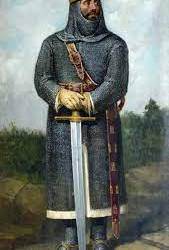
A finales de 1128 o enero de 1129, los prometidos contraían matrimonio en la villa de Saldaña. Con motivo de las celebraciones de los esponsales, que duraron varios días, se dice que tuvo lugar la primera corrida de toros celebrada en la Península. La pareja imperial tuvo siete hijos, destacándose Sancho III de Castilla y Fernando II de León. La joven reina forjó una gran amistad con su cuñada la infanta Sancha Raimúndez, llegando a ser ambas las principales consejeras de Alfonso VII. Berenguela participó en la política de forma activa, fue la principal responsable de apagar la rebelión del conde de Asturias Gonzalo Peláez y acompañó a su esposo a la guerra en muchas ocasiones, participando así de sus victorias.
En 1135 tuvo lugar la coronación de Alfonso VII como Imperator totius Hispaniae en la catedral de León, gran parte de los nobles presentes en el acto habían llegado gracias a los contactos de la reina y su familia; así su hermano Ramón Berenguer IV, Armengol de Urgel, el conde Alfonso Jordán de Tolosa, el de Montpellier, el duque de Gascuña, el de Foix y otros grandes señores del Sur de Francia. A ella, entonces, cupo el gran honor de ser la Emperatriz consorte de Hispania.

Nos dice la crónica de Alfonso VII que en 1139 la reina Berenguela fue la responsable de una heroica resistencia en Toledo. Habiendo partido su marido al sitio del castillo de Aurelia, encargó a su esposa la defensa de la ciudad. Pero la campaña se alargó demasiado y Toledo fue sitiada por las tropas musulmanas. Berenguela reunió un pequeño ejército, pero, consciente de su inferioridad, decidió intentar una jugada diplomática para tratar de evitar la lucha. Indignada por la destrucción de la torre de San Servando, cercana a la ciudad, Berenguela envió un mensajero con una carta al campo enemigo que decía lo siguiente:
"¿No conocéis que es mengua de caballeros y capitanes esforzados acometer a una mujer indefensa cuando tan cerca os espera el emperador? Si quereis pelear id a Aurelia y allí podréis acreditar que sois valientes, como aquí dejar demostrado que sois hombres de honor si os retiráis".
La reina Berenguela apareció además sentada sobre un trono real en una de las torres, rodeada de sus doncellas, que cantaban con tímpanos, cítaras, címbalos y salterios. Los musulmanes quedaron impresionados por la nobleza de la reina y levantaron inmediatamente el cerco, marchando a luchar contra Alfonso. Cuando el alcaide de Toledo, Nuño Alfonso, entró victorioso en la ciudad portando las cabezas de los emires de Sevilla y Córdoba, las mandó colgar de las torres del alcázar, pero la reina se apiadó, ordenando que las embalsamaran y enviaran a sus viudas en cofres de oro. Una torre en Toledo (la Torre de la Reina) recuerda la gesta de la reina Berenguela.
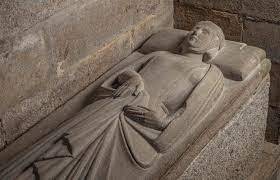
Berenguela es recordada como una prudente reina que sacrificó sus sentimientos dando prioridad a los intereses de la corona. Cuando de las infidelidades de su esposo con la noble asturiana Gontrodo Pérez nació una hija, doña Urraca, la reina perdonó a su esposo y quiso ganárselo mediante el cariño. Aún más, cuando Urraca casó con el rey de Navarra García el Restaurador, la reina Berenguela se encargó de preparar los esponsales con gran pompa y asistió, dando gran realce a la ceremonia. Mujer culta, Berenguela fue una gran mecenas y amante de las artes, a ella se debe el impulso de la poesía provenzal en el reino, apoyó a escritores que narraban las hazañas del Cid y fomentó el peregrinaje a Santiago de Compostela, donde fue enterrada. Su muerte fue muy lamentada, tanto que, según los historiadores de la época, el año 1149 fue usado en los documentos como punto de partida para fechar los acontecimientos, bajo la fórmula "año en que falleció la señora emperatriz".
#Berenguela de Barcelona#Berenguela Berenguer#Berengaria of Barcelona#Spanish history#women in history#Alfonso VII
25 notes
·
View notes
Photo
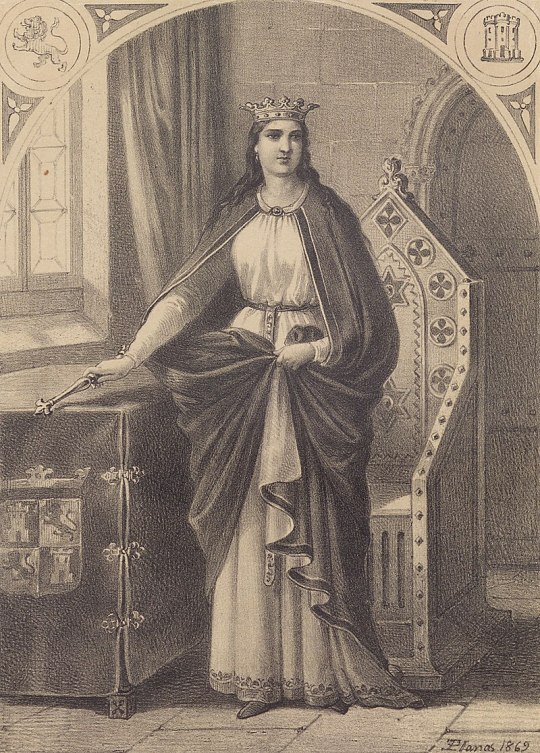
María Alfonso Téllez de Meneses (c. 1265 – 1321), known as María de Molina, was queen consort of Castile and León from 1284 to 1295 by marriage to Sancho IV of Castile, and served as regent for her minor son Ferdinand IV (1295 - c.1301) and later her grandson Alfonso XI of Castile (1312-1321).
#María Alfonso Téllez de Meneses#María de Molina#House Ivrea#XIII century#XIV century#Illustration#art#arte
3 notes
·
View notes
Text


Queen Zahida meanwhile, announces that she is pregnant with child! But soon after, not more than 4 months into the pregnancy she reveals that she miscarried! Oh, why did fate so torment us? Is this punishment (karma) for King Alfonso's treacherous planning of his brother's death?


Speaking of brother's death, King Alfonso had all the preparations ready for his brother King Sancho's murder. ...And he pulled it off with success! The flaming arrows shot were lethal and no one discovered any connection of the incident to King Alfonso... And so, King Alfonso inherited the Kingdom of Castille.
2 notes
·
View notes
Photo

King Sancho IV of Castile (1258-1295), son and heir of King Alfonso X of Castile. By Luis Ferrant y Llausás.
#Luis Ferrant y Llausás#monarquia española#reyes de españa#reyes de castilla y león#casa de borgoña#full length portrait#kingdom of spain#spain in the middle ages#full-length portrait#house of ivrea
5 notes
·
View notes
Text
RAMIRO II
King of León
(born before 897 - died 951)

pictured above is an imagined portrait of the King of Asturias, by Rufino Casado from 1852
-------------------- ~ -------------------- ~ --------------------
SERIES - Descendants of the Kings of Asturias: Ramiro was a grandson of Alfonsu III, King of Asturias from 866. His father Ordoñu II, King of León is considered by some sources to have been King of Asturias from 914, though León was his base.
-------------------- ~ -------------------- ~ --------------------
RAMIRU was probably born before 897, on an unknown location at the Kingdom of Asturias. He was one of the sons of Infante Ordoñu of Asturias and Elvira Méndez.
Probably born during the reign of his grandfather Alfonsu III, King of Asturias he was a member of a branch line of the ASTUR-LEONESE DYNASTY and was named RAMIRU ORDÓÑEZ, meaning Ramiru son of Ordõnu.
During his childhood his father and uncles rebelled against his grandfather, who by 910 either abdicated or died. And at that time his uncle became García I, King of León and his father became the King of Galicia, founding another branch line of the Astur-Leonese Dynasty the Ordóñez Dynasty.
By 914 his uncle died without children and his father inherited his territories as Ordoñu II, King of León. But as some sources say that his uncle was also the King of the whole of Asturias, his father could also have become the King of Asturias. So he became an INFANTE OF LEÓN and possibly an INFANTE OF ASTURIAS.
In 924, when his father died, his older brothers were not considered to succeed to the throne. And instead his uncle Fruela II, King of Asturias became the ruler of León and Galicia.
When his uncle died in 925 a civil war arose as the Infante and his brothers began to fight their cousins, the sons of the late King Fruela II.
As he and his brothers received Gallician support during the civil war, it is believed that he married ADOSINDA around 925. She was from Gallician nobility, one of the daughters of Gutierre Osóriz, Count in Galicia and Aldonza Méndez. They were first cousins through their mothers, who were sisters, and possibly had three children (check the list below).
He and his brothers were victorious at the civil war and by late 925/early 926 his two older brothers became Sancho, King of Galicia and Alfonso IV, King of León. While he got the County of Portugal, but did not use the title of Count of Portugal.
Though his eldest brother King Sancho died without heirs around 929 and Galicia returned to the government of the Kingdom of León, under his other brother King Alfonso IV.
Some sources believe that he reputiaded his wife Adosinda around 930, because she was not acknowleged as Queen Consort when he succeeded as RAMIRO II, KING OF LEÓN around 931, after the abdication of his brother King Alfonso IV. He ruled as King of León and over Asturias, Galicia and Portugal.
However the former King, who had became a monk, soon regretted the abdication and tried to reclaim the throne, briefly managing to take León. Though he ultimately defeated his brother, imprisoned and blinded him.
Although it is not certain if he was still marrried to his first wife at the time of the abdication, it is known that around 932-34 he married again, to URRAKA. She was a Navarrese Royal as one of the daughters of Antso I, King of Pamplona and Tota Aznaritz. With her he had two children (check the list below).
Two of his second wife's sisters had already been Queen Consorts of León as wife's of his father and brother King Alfonso IV, so he may have decided to marry her to renew the Leonese-Navarrese alliance.
Over the years he fought the Muslims in the Iberian Peninsula, sometimes with Castilian, Navarrese and Aragonese support, and was known by the Muslims as "the Devil".
It was during his reign that Fernán González, Count of Castile took advantage of the neglection of Castilian lands by the government of León, to gain power over other eastern territories like Burgos and Álava. Thus creating the basis for the future Kingdom of Castile that would be ruled by descendants of both King Ramiro II and the Count of Castile.
The King of León died in early 951, probably at León, the capital of the Kingdom. He was probably at least in his fifties.
-------------------- ~ -------------------- ~ --------------------
After his death he was succeeded by his oldest surviving son as King Ordoño III. But the succession did not went smoothly and another of his sons Infante Sancho fought his half-brother, eventually succeeding as King Sancho I.
-------------------- ~ -------------------- ~ --------------------
Check my posts on RAMIRO II's family, his Royal House and his connections to the Kings of Asturias!
RAMIRO II and his first wife ADOSINDA may have had three children...
Bermudo Ramírez - probably unmarried;
Ordoño III, King of León - husband of Urraca Fernández; and
possibly Teresa Ramírez - possible wife of Gartzia II Santxitz, King of Pamplona.
With his second wife URRAKA he had two recorded children...
Sancho I, King of León - husband of Teresa Ansúrez; and
Elvira Ramírez, Regent of León - a nun.
And he may have had another child... either legitimate or illegitimate...
possibly Velasquita Ramírez - wife of Bermudo II, King of León.
He was born a member of a branch line of the Astur-Leonese Dynasty and became a member of another line, the Ordóñez Dynasty.
In a span of three generations, RAMIRO II was related to the Kings of Asturias through his father…
His father was Ordoñu II, King of León - possibly the King of Asturias between 914-24.
His grandfather was Alfonsu III, King of Asturias - the King of Asturias between 866-910.
#ramiro ii#king of león#kingdom of asturias#middle ages#medieval spain#medieval europe#astur leonese dynasty#royals#royalty#monarchy#monarchies#asturian royalty#spanish royals#royal history#asturian history#spanish history#iberian history#european history#world history#history#reconquista#9th century#10th century#history with laura
2 notes
·
View notes
Text
Day 2: Beatrice of Castile
Beatrice of Castile (also spelled Beatriz)
Born: 1293
Died: 25 October 1359
Parents: Sancho IV and María de Molina
Infanta of Castile
Queen of Portugal as the wife of Afonso IV ( 7 January 1325 – 28 May 1357)
Children: Maria (1313 – 18 January 1357) - the wife of Alfonso XI of Castile and mother of the future king Peter I of Castile.
Alfonso (1315– 1317)
Denis (born 12 February 1317) - died a few months after his birth
Peter (8 April 1320 – 18 January 1367) - King of Portugal
Isabel (21 December 1324 – 11 July 1326)
John (23 September 1326 – 21 June 1327)
Eleanor (1328 – 1348) - the wife of Peter IV of Aragon
She was born in Toro, Kingdom of Castile.
On 13 September 1297, the Treaty of Alcañices was signed by her mother, regent at the time, and the King of Portugal. The treaty included marriage clauses to reinforce the peace.
The four year old Beatrice abandoned Castile the same year to move to the Portuguese court where she was raised alongside her future spouse , Infante Afonso, who was 2 years her senior. She was raised in a refined environment, courtesy of her future father-in-law King Denis of Portugal.
Upon her arrival, she was given multiple wedding tokens including properties by the king. After marriage the number of estates increased, her husband gifting her a great number before even ascending the throne. She received even more properties after her son became king.
Before the marriage could take place a papal dispensation was required.
The papal bull was issued in 1301 but the marriage was postponed until Beatrice and Alfonso were of age.
In 1309 the two were married, aged 16 and 18. The marriage was celebrated in Lisbon on 12 September 1309. The marriage was happy and successful, Alfonso did not have a single child out of wedlock. The couple had 7 children, 3 living past infancy.
She played an important role in the affairs of the kingdom, mediated numerous conflicts, founded a hospital and left numerous properties and sums to religious establishments.
She had 7 children, only 3 reaching adulthood.
Beatrice died aged 66 in Lisbon. She is buried in Lisbon Cathedral next to her husband.
#portuguese history#spanish history#women history#history#medieval history#14th century#1300s#13th century
0 notes
Text
Events 7.16 (before 1900)
622 – The Hijrah of Muhammad begins, marking the beginning of the Islamic calendar.
997 – Battle of Spercheios: Bulgarian forces of Tsar Samuel are defeated by a Byzantine army under general Nikephoros Ouranos at the Spercheios River in Greece.
1054 – Three Roman legates break relations between Western and Eastern Christian Churches through the act of placing a Papal bull (of doubtful validity) of Excommunication on the altar of Hagia Sophia during Saturday afternoon divine liturgy. Historians frequently describe the event as the formal start of the East–West Schism.
1212 – Battle of Las Navas de Tolosa: After Pope Innocent III calls European knights to a crusade, forces of Kings Alfonso VIII of Castile, Sancho VII of Navarre, Peter II of Aragon and Afonso II of Portugal defeat those of the Berber Muslim leader Almohad, thus marking a significant turning point in the Reconquista and in the medieval history of Spain.
1228 – The canonization of Saint Francis of Assisi
1232 – The Spanish town of Arjona declares independence and names its native Muhammad ibn Yusuf as ruler. This marks the Muhammad's first rise to prominence; he would later establish the Nasrid Emirate of Granada, the last independent Muslim state in Spain.
1251 – Celebrated by the Carmelite Order–but doubted by modern historians–as the day when Saint Simon Stock had a vision of the Virgin Mary.
1377 – King Richard II of England is crowned.
1536 – Jacques Cartier, navigator and explorer, returns home to St. Malo after claiming Stadacona (Quebec), Hochelaga (Montereal) and the River of Canada (St. Lawrence River) region for France.
1661 – The first banknotes in Europe are issued by the Swedish bank Stockholms Banco.
1683 – Manchu Qing dynasty naval forces under traitorous commander Shi Lang defeat the Kingdom of Tungning in the Battle of Penghu near the Pescadores Islands.
1769 – Father Junípero Serra founds California's first mission, Mission San Diego de Alcalá. Over the following decades, it evolves into the city of San Diego, California.
1779 – American Revolutionary War: Light infantry of the Continental Army seize a fortified British Army position in a midnight bayonet attack at the Battle of Stony Point.
1790 – The District of Columbia is established as the capital of the United States after signature of the Residence Act.
1809 – The city of La Paz, in what is today Bolivia, declares its independence from the Spanish Crown during the La Paz revolution and forms the Junta Tuitiva, the first independent government in Spanish America, led by Pedro Domingo Murillo.
1849 – Antonio María Claret y Clará founds the Congregation of the Missionary Sons of the Immaculate Heart of Mary, popularly known as the Claretians in Vic, in the province of Barcelona, Catalonia, Spain.
1858 – The last apparition of the Blessed Virgin Mary to Bernadette Soubirous in Lourdes, France.
1861 – American Civil War: At the order of President Abraham Lincoln, Union troops begin a 25-mile march into Virginia for what will become the First Battle of Bull Run, the first major land battle of the war.
1862 – American Civil War: David Farragut is promoted to rear admiral, becoming the first officer in United States Navy to hold an admiral rank.
0 notes
Photo
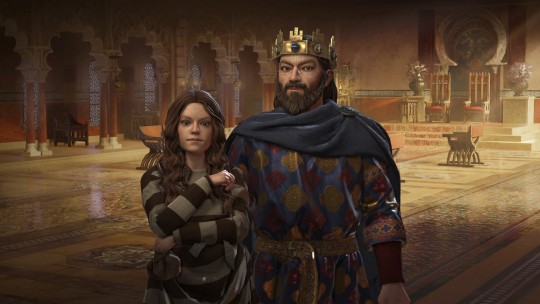
Now that I can play with mods and get achievements, I’m having fun planning my games more.
Here is King Garcia, grandson of El Cid Campeador who got me the Legacy of the Campeadores achievement by ruling over Valiencia (along with Castille Leon and Galicia he got from his other grandfather Sancho II of Castille), and his second daugher Blanca, who will eventually rule over Valencia independently.
I am so so glad they both got the Cid eyebrows

Step by step method:
1) play as Urraca of Zamora
2) immediately put a stop to your liaison with Alfonso because wtf
3) suck up to Sancho and propose to marry his best friend El Cid
4) live your merry tall life while your brothers are fighting each other
5) start conquering the land needed for Valencia
6) miscarry first child because you’re cursed (optional step)
7) have daughter, she’s somehow quick out of nowhere #blessed
8) Sancho, having steamrolled your other brothers, gives a county to his only son, a toddler.
9) nephew is defeated by vassal and wanders to Scotland of all places
10) Urraca dies burned alive of new harm mechanic #cursed
11) daughter Cristina left to fend for herself fights corrupt regents until she’s 20, El Cid busy being a count for his bestie #nepotism
12) check on Sancho’s son and heir, he’s in Sardinia for tourism (??)
13) marry the cousins while he doesn’t realize he will be king
14) miscarry first pregnancy to uphold the cursed legacy
15) somehow have twin boys who are both quick #doubleblessed
16) husband soon to be king is now a leper (optional step)
17) finish conquering de jure land for Kingdom of Valencia
18) have another miscarriage because Cristina is still being intimate with her leper husband
19) king Sancho and daddy El Cid die at almost the same time #bromance
20) husbando, now king, gives counties to the twins, still children
21) twins somehow grow up without hurdles, first born decides to marry an ugly spindly woman
22) first grandbaby is inbred, spindly wife not a Jimenez, confusion
23) kill spindly wife and baby out of spite (very wrong step)
24) leper husband dies of leprosy, twins inherit separate kingdoms. they are best friends so you don’t have to worry about infighting
25) Cristina also a leper now, wow very surprising
26) first twin marries another even uglier homely woman, you’re tired
27) kill her whilst regretting your first daughter-in-law
28) first twin dies of heart attack, maybe due to stress of dead wives
29) remaining twin who inherited everything, also marries a spindly woman as an homage to his brother. you give up
30) Cristina dies of leprosy, son finally creates Kingdom of Valencia
Spindly wife (the other one) gave Garcia 4 daughters and only one is quick but none are spindly so, you know, I count my blessings.
0 notes
Text
Mermaid hand mirror

Assona Iniguez de Navarre Musa ibn Fortun 0717 Fortun ibn Qasi 0725 Aisha bint Abdul 0690 Cassius Abd-al- Aziz ibn Musa ~0695 Egilon de Visigoths 0660 - 0718 Musa Ben Nuseir 58 58 Conqueror of Spaindied in prison in DamascusNote: Al-Walid ibn Abd al-Malik, Caliph of Damascus (705-715), fearing Musa's military success and popularity, recalled Musa to Damascus, where Musa died in prison three years later. In some places, De Castro appears to have this Diego Lainez confused with the brother of his ancestor Fernan Lainez, who bears the same name. Mugawwan ibn Nahur Nahur ibn Yarub Yarub ibn Yashjub Yashjub ibn Nabet Nabet ibn Ishmael Amra Sasaa 0575 Alkama al- Kinaniyya 0602 Mu'Awiya Ben-Al- Mughira ~0820 - 0908 Fortun Garces 88 /1060 - 1115 Jimena Diaz ~0815 Aria Munia 0772 - 0816 Sancho de Gascony 44 44 ~0775 de Aragon ~0681 Loup de Gascony ~0734 Numabela de Cantabria ~0750 - ~0839 Aznar Galindez 89 89 Loup ibn Musa Ayab al- Bulatya Musa ibn Musa Father of "El Cid". Rodrigo Diaz "El Cid" de Vivar, leading the army of Al-Mutamin of Zaragoza, defeats a combined army of the kings of Valencia (Al-Mundhir), Lerida (Al-Hayib), Aragon (Sancho Ramirez) and the Count of Barcelona (Berenguer Ramon II - who is captured).1084The Muslim army of Zaragoza under El Cid defeats the Aragonese. Rodrigo Diaz, defeats the Emir Abd Allah of Granada, who was helped by the Castilian Count Garcia Ordonez.1082Battle of Almenar (Menendez, 1934). Rodrigo Diaz de Vivar manages to encourage both King and army, and leads them in a new attack the following morning.1079Battle of Cabra. The battle starts at dawn and after a hard fight the Castilians are driven from the field. Sancho II of Castile defeats his brother, Alfonso VI of Leon over the Carrion River (9 miles south of the city of Santa maria de Carrion - the capital of the Beni-Gomez - Christian counts of Saldana, Liebana, Carrion, and Zamora). The Castilians under Sancho II and Rodriego Diaz defeat the Leonese and Alfonso flees.1072Battle of Golpejera (early Jan) (Menendez, 1934). The siege is lifted after Emir Al-Muqtadir pays a large ransom and promises tribute.1068The Battle of Llantada was arranged to be fought on 19 July by the banks of the Pisuerga River on the boundary between Leon and Castile (Menendez, 1934). The opposing armies meet and after a protracted struggle Ramiro I is killed and the Aragonese flee (8 May).1067The Castilian army under Sancho II and the Alferez Rodrigo Diaz de Vivar - already known as "El Cid" by this time - besiege Zaragoza (Menendez, 1934). Rodrigo Diaz de Vivar (later known as "El Cid") is probably in the Castilian contingent. The Emir Al-Muktadir of Zaragoza leads his army north accompanied by a Castilian contingent under Prince Sancho (the future Sancho II). During the spring Ramiro I of Aragon besieges Muslim Graus in Zaragozan territory. After taking Valencia in 1094, he passed into legend as "El Cid", interestingly an Arabic title, Sid, "lord, master."1063Battle of Graus (Menendez, 1934). Rodrigo came to fall out of favor and in 1081 became a mercenary, fighting for both Christians and Moslems. Udad ibn Mugawwan 1049 - 1099 Rodrigo Diez de Vivar 50 50 When Alfonso, deposed by his brother, Sancho II of Castile, returned to power in Castile as well Leon, he took on many of Sancho's retainers, including one Rodrigo Diaz (d. "Beyond `Adnan none but the Lord knows and thegenealogists lie". ABT 2643 BC Sekhemkhet (3rd Dynasty - abt 2649-43 BC) ~1020 Sancho Fortun de Maranon sn de Maranon ABT 0610/0620 - >0716 Theodo von Bayern ~0602 Gleisnod b? Salzburg, Austria ~0002 Ilyas ibn Mudar Abt 0002 BC/0010 AD Layla bani Khindif Codhaite 0031 BC Mudar ibn Nizar 0040 BC Al- Hanfa al Riyab Nizar ibn Ma'add Ma'add ibn Adnan Adnan ibn Udad Note: Muhammad the Prophet never traced his ancestors farther than`Adnan, anddeclared that all who went back further were guilty offabrication andfalsehood. ABT 2637 BC Khaba # NSFX: (3rd Dynasty - abt 2643-37 BC) D. ? Raqashi al- Naqimiya Bakr 0335 Murra ibn Ka'b Hind 0305 Kab ibn Luayy ~0320 Makhshiya Lu'ayy ibn Ghalib ~0280 Mawiya Ghalib ibn Fihr ABT 0225/0240 Atika Salma binte-Umro- bin-Rabia ~1010 - 1054 Garcia Sanchez 44 44 King of Pamplona ~0215 Fihr ibn Malik ~0215 Layla 17622 bint Adwan 0948 Foucher de Chartres Qays al-Nadr ibn Kinama Ikrisha bint Adwan ~0662 - 0725 Tassilo von Bayern 63 63 ~0930 Hughes de Chartres D. see for information on how tocorrectly configure a web server for svg files. PLEASE NOTE: If you do not see a GRAPHIC IMAGE of a family tree here but are seeing this textinstead then it is most probably because the web server is not correctly configured to serve svgpages correctly.

1 note
·
View note
Text
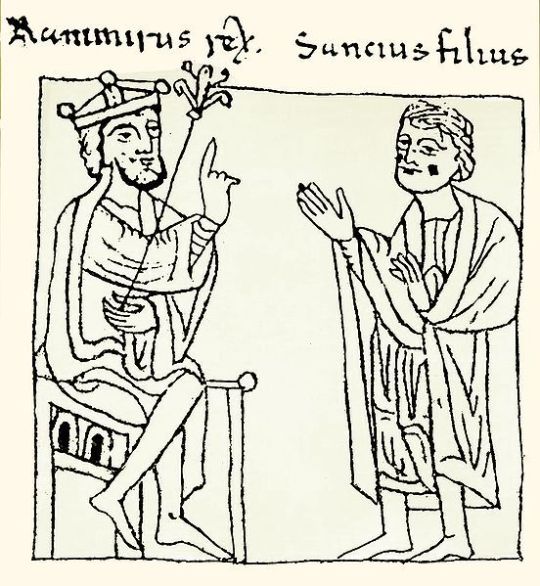



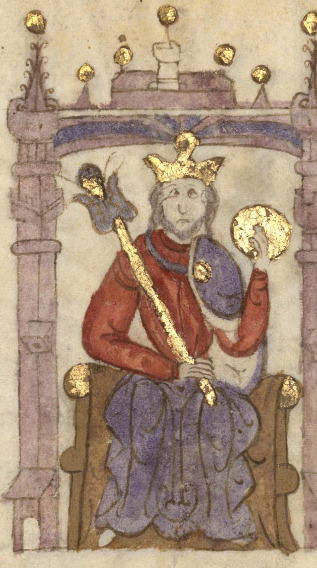

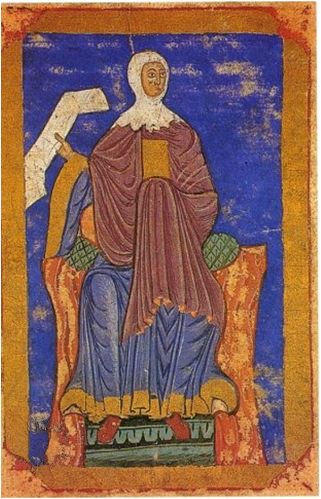

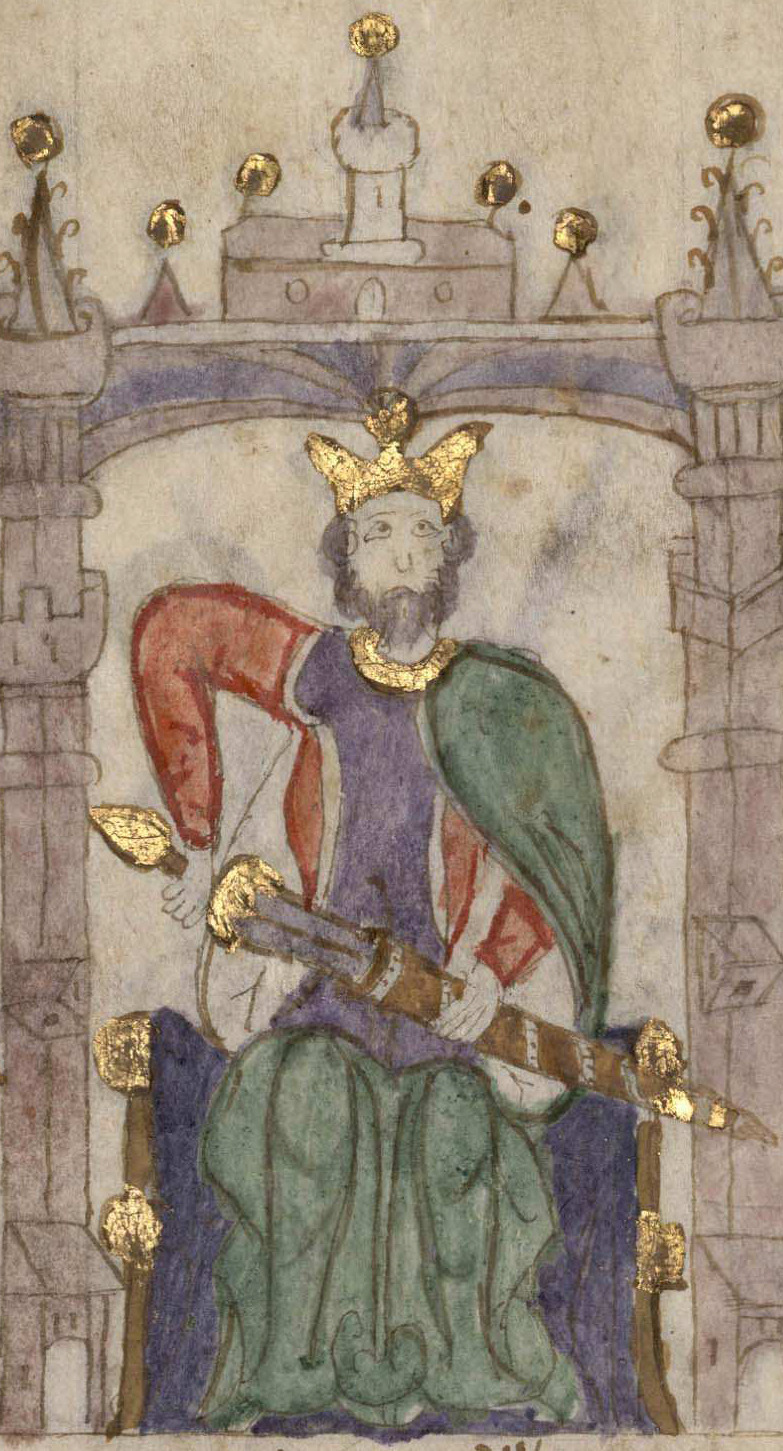

The Bastard Kings and their families
This is series of posts are complementary to this historical parallels post from the JON SNOW FORTNIGHT EVENT, and it's purpouse to discover the lives of medieval bastard kings, and the following posts are meant to collect portraits of those kings and their close relatives.
In many cases it's difficult to find contemporary art of their period, so some of the portrayals are subsequent.
1) Ramiro I of Aragon (1006/7- 1063), son of Sancho III of Pamplona and Sancha de Aybar; with his son Sancho I of Aragon & V of Pamplona (1043-1094)
2) His wife, Ermesinda of Foix (1015 - 1049), mother of Sancho I of Aragon. Daughter of Bernard Roger de Foix and his wife Garsenda de Bigorra; and Sancha of Aragon (1045-1097), daughter of Ramiro I and Ermesinda
3) His father, Sancho III of Pamplona (992/96-1035), son of García II of Pamplona and Jimena Fernández
4) His brother, García III of Pamplona (1012-1054), son of Sancho III of Pamplona and his wife Muniadona of Castile
5) His nephew, Sancho IV of Pamplona (1039- 1076), son of García III of Pamplona and his wife Placencia of Normandy
6) His brother, Ferdinand I of Leon (1016- 1065), son of Sancho III of Pamplona and his wife Muniadona of Castile
7) His niece, Urraca of Zamora (1033-1101), daughter of Ferdinand I of Leon and Sancha of Leon
8) His niece, Elvira of Toro (1038-1099), daughter of Ferdinand I of Leon and Sancha of Leon
9) Sancho II of Castile (1038/1039-1072), son of Ferdinand I of Leon and Sancha of Leon
10) Alfonso VI of Leon (1040/1041-1109), son of Ferdinand I of Leon and Sancha of Leon
#jonsnowfortnightevent#jonsnowfortnightevent2023#asoiaf#a song of ice and fire#day 10#echoes of the past#historical parallels#medieval bastard kings#ramiro i of aragon#sancho i of aragon#sancha of aragon#ermesinda of foix#sancho iii of pamplona#garcía iii of pamplona#sancho iv of pamplona#ferdinand i of leon#urraca of zamora#elvira of toro#sancho ii of castile#alfonso vi of leon#bastard kings and their families#canonjonsnow
26 notes
·
View notes
Photo


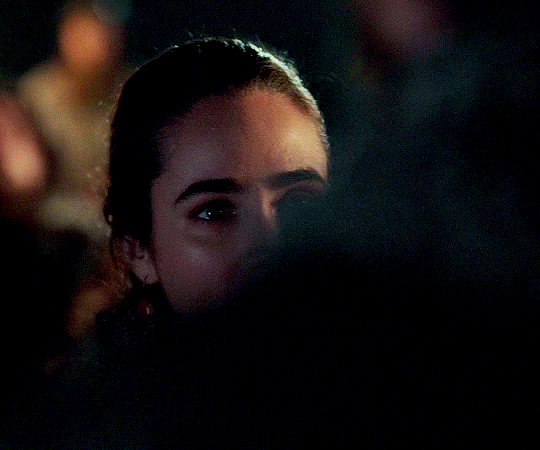

¿Acaso todavía no te has saciado de sangre, Sancho?
El Cid (2020–), 2x04
#El Cid#El Cid 2020#El Cid Amazon Prime#Spanish cinema#Spanish TV#period drama#Alfonso VI de León#Urraca de Zamora#Sancho II de Castilla#Orduño Flaínez#Alfonso VI of León#Alfonso VI of Leon#Urraca of Zamora#Sancho II of Castile#Jaime Olías#Jaime Olias#Alicia Sanz#Francisco Ortiz#Pablo Álvarez#Pablo Alvarez#El Cid 2x04#still hate it when Urraca makes political decisions without informing Alfonso#he deserves so much better you know#(also the way he stops angered Orduño there? Alfonso is precious)#but the repressed gang fight feeling this scene gives is hilarious
48 notes
·
View notes
Text


Alfonso ends up involved with and acquiring a lover in Christine von Floridsdorf in a night of passion. This lowers the quality of our crown. Meanwhile, Christine asks Alfonso if there is anyone he'd like to dedicate the crown to, and he replies Queen Zahida.

In the meantime, Queen Zahida, Archbishop Sancho and 24 other courtiers gained the trait Intrigue Courtier as they have served in our level 5 intrigue court for 5 years or more.

Alfonso's mother Infanta Sancha Elvirez of Castille finally died at the age of 67 from being ill for a long time now.

Duke Nuno of Portucale finally paid homage to Alfonso, but stumbled when he rose from his kneeling. Despite being one of his most troubling and threatening vassals, Alfonso decided to be kind and said Duke Nuno's oaths are all that mattered to him.

I have decided to go down the blood line of the dynasty legacies and unlocked Convergent Blood.
0 notes
Photo
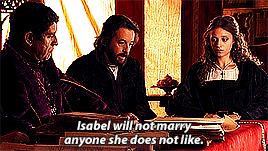


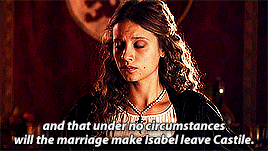



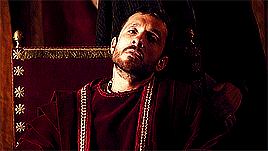
BONUS

for @eyes-painted-with-kohl
#perioddramaedit#isabel tve#1x06#2x01#isabella i of castile#ferdinand ii of aragon#juan pacheco#gonzalo chacón#enrique iv of castile#alfonso carrillo#michelle jenner#rodolfo sancho#ginés garcía millán#ramón madaula#pablo derqui#pedro casablanc
78 notes
·
View notes
Text
ORDOÑO IV
King of León
THE WICKED / THE BAD
(born c. 926 - died 962)

pictured above is an imagined portrait of the King of Asturias, an excerpt of the book "Libro de los Privilegios de la Catedral de Santiago, Álbum de Reyes"
-------------------- ~ -------------------- ~ --------------------
SERIES - Descendants of the Kings of Asturias: Ordoño was a great-grandson of Alfonsu III, King of Asturias from 866. Also his grandfather Ordoñu II, King of León is considered by some sources to have been King of Asturias from 914, reigning from León.
-------------------- ~ -------------------- ~ --------------------
ORDOÑO was born around 926, on an unrecorded location in the Iberian Peninsula. He was the eldest son of Alfonso IV, King of León and Oneka Santxitz of Pamplona, and thus was a member of the Ordónez Dynasty, a branch of the ASTUR-LEONESE DYNASTY.
It is not known if he was born before or after his father became the King of León by the end of 925/early 926. So he could have been an INFANTE OF LEÓN since he was born.
Nothing is known about his childhood either that, after his mother's death around 931 his father abdicated. And as he and his brother Infante Fruela were still very young they were not considered to succeed on the Leonese throne and his uncle became the new King Ramiro II.
Following the abdication his father retired to a monastery, unsuccesfully tried to retake the throne and was imprisoned, dying around 933. But while these events happened, the fates of him and his brother are unknown.
As the eldest son he was probably born to become King one day. However do to the abdication of his father he had a long path towards the Monarchy.
A lot happened at the Kingdom of León during the 950s. In 951 his uncle died and the throne was inherited by one of his cousin's, who acceded as King Ordoño III. However when King Ordoño III died in 956 the throne did not pass to his son, instead it passed to another of King Ramiro II's sons, who ruled as King Sancho I.
Probably between 956-58 he married to his first cousin, URRACA, who happened to be the widow of his cousin King Ordoño III. She was of Castilian origins as one of the daughters of Fernán González, Count of Castile and Antsa Santxitz of Pamplona. They did not have any recorded children, but some sources believe that they had one daughter (check below).
He probably got married to her because the Count of Castile switched alliances between the two lines of the Ordóñez Dynasty, as he had been an ally of King Sancho I and decided to give his support to Infante Ordoño instead.
And so when King Sancho I was deposed by the nobility in 958, his father-in-law probably supported his election as the new Monarch. However he only reigned as ORDOÑO IV, KING OF LEÓN until 960, when King Sancho I reconquered León with Navarrese and Muslim support.
After his deposition King Sancho I probably banned him and he fled to Asturias and later to the Caliphate of Córdoba, where he unsuccessfully sought support to try to recover the Leonese throne.
So it is believed that the former King of Asturias died in 962, at the Caliphate of Córdoba. He was probably in his thirties.
-------------------- ~ -------------------- ~ --------------------
When he fled to the Caliphate of Córdoba he abandoned his wife, who after his alleged death in 962 married for the third time. And in 970 her new husband succeeded as Antso II, King of Pamplona.
-------------------- ~ -------------------- ~ --------------------
Check my posts about ORDOÑO IV's family, his Royal House and his connections to the Kings of Asturias!
ORDOÑO IV's and his wife URRACA may have had one child...
possibly Velasquita Ordóñez - wife of Bermudo II, King of León.
He was born a member of a branch line of the Astur-Leonese Dynasty and became a member of another line, the Ordóñez Dynasty.
In a span of four generations, ORDOÑO IV was related to the Kings of Asturias through his father…
His father was Alfonso IV, King of León.
His grandfather was Ordoñu II, King of León - possibly the King of Asturias between 914-24.
His great-grandfather was Alfonsu III, King of Asturias - the King of Asturias between 866-910.
#ordoño iv#king of león#middle ages#medieval spain#medieval europe#astur leonese dynasty#royals#royalty#monarchy#monarchies#asturian royalty#spanish royals#royal history#asturian history#spanish history#iberian history#european history#world history#history#reconquista#10th century#history with laura
1 note
·
View note
Photo

Royal women in history | Parallels: María de Molina and Kösem Sultan
María de Molina, queen consort of Castile and two times regent of the Iberian kingdom (to her son and grandson) is one of my absolutely favourite historical ladies. Her life parallels the one of another greatest ruler, Kösem Sultan. So I came up with this lame edit.
#maria de molina#queen of castile#kings and queens#kings and queens of castile#queens of castile#sancho iv#ferdinand iv#alfonso xi#kosem#kosem sultan#muhteşem yüzyıl kösem#murad iv#mehmed iv#ottoman history#ottoman empire#spanish history#castilian history#castile#regent#consorts#women in history#medieval queens
107 notes
·
View notes